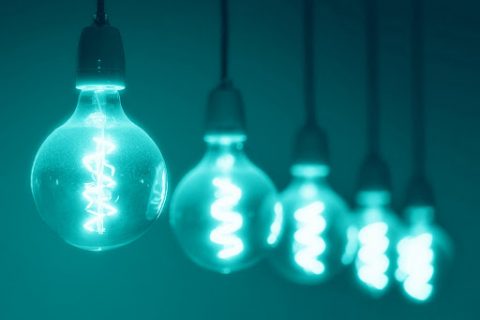
Perhaps you have noticed that some folks who wear glasses have a purple or blue reflection or sheen to their lenses. What is all this about and does it have any real significance?
Of all the wavelengths of light and energy in existence we are going to focus on the shorter, visible wavelengths- the purple and blue wavelengths. Purple light wavelengths begin at 380 nanometers extending into blue light wavelengths which end at about 480 nanometers. These are high energy wavelengths of all the visible light. More on that later.
As with all of God’s natural laws, they can be applied positively or negatively. The same is true with Blue light ( this includes purple light as well). Here are just a few of some positive things Blue light does.
Increases focus and improves mental performance.
Improves mood - Sometimes used to treat depression.
Can be used to treat certain skin conditions - Photodynamic Therapy (PDT) often referred to as Blue Light Therapy.
What about the negatives? Again, not an exhaustive list but here goes.
It inhibits melatonin which is what the body secretes when it is dark outside telling you to go to bed. That’s why people who stay up late on computers or cell phones do not sleep as soundly as they normally would.
It is associated with Age-related macular degeneration or ARMD. Let me be careful here since the jury is still out on this one. We are not saying it causes ARMD, it is just associated with it. This has nothing to do with electronic devices as the sunlight has much more blue light emitted then electronic devices.
At this point, there is so much we still don’t know about Blue light. Science is still gathering the data.
So why do people wear Blue Anti-Reflective lenses? Is there a benefit in doing so?
Remember the part about Blue light having a higher energy than the other colors in the spectrum? Well, it turns out that when you are on your compute or cell phone, the blue light that is emitted gets “bent” or refracted more than the other wavelengths as it enters the eye because of its higher energy. The blue light does not focus where it should and your eyes compensate for this automatically to bring it into focus.
The result of all of this is that your eyes work harder to see a target on your computer screen than to see the same target at the same distance on a printed piece of paper. That is why folks use Blue Anti-Reflective lenses - to block the shorter, higher energy wavelengths coming off their screen thereby reducing eye fatigue.
To be clear, this is not a health concern with electronic devices but merely an ergonomic concern for those who spend a couple of hours or more on these devices.
We should neither dismiss nor fear Blue light but rather continue to learn about its characteristics which will deepen our understanding of how God’s universe works.
